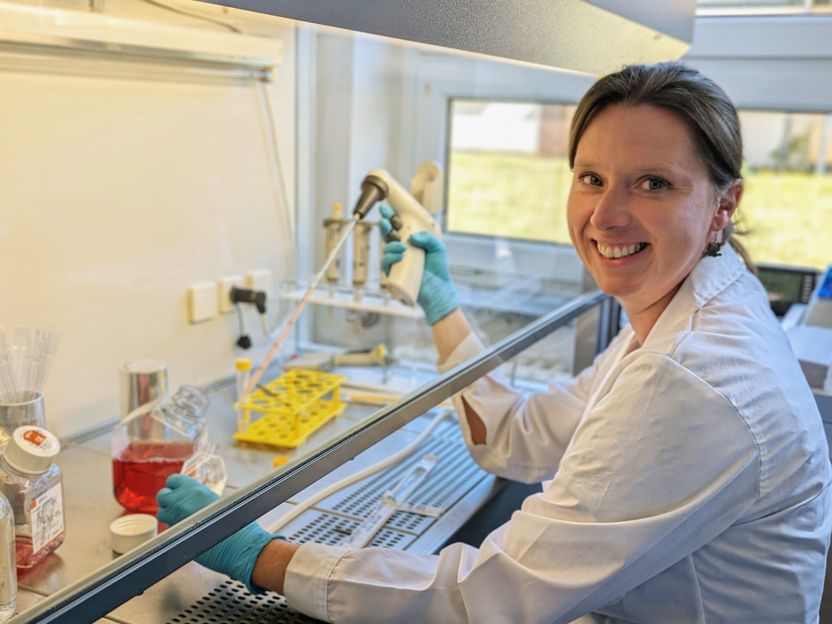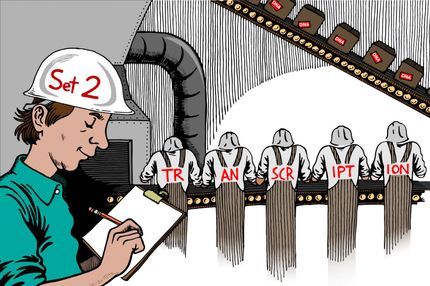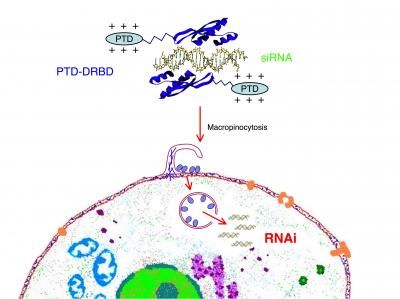New genetic link between cardiac arrhythmias and thyroid dysfunction identified
Two genes represent potential drug targets for both heart and endocrine disease
genes previously known to be essential to the coordinated, rhythmic electrical activity of cardiac muscle - a healthy heartbeat - have now also been found to play a key role in thyroid hormone (TH) biosynthesis, according to Weill Cornell Medical College researchers.
The authors' findings, published by Nature Medicine, suggest that mutations of either of two gene products - proteins called KCNE2 and KCNQ1 - already known to be involved in human cardiac arrhythmias, could also cause thyroid dysfunction.
"It has long been known that the thyroid influences cardiac function and cardiac arrhythmias," says study senior author Dr. Geoffrey W. Abbott, associate professor of pharmacology in medicine at Weill Cornell Medical College, "but our findings demonstrate a novel genetic link between inherited cardiac arrhythmia and thyroid dysfunction."
Additionally, it is the authors' suggestion that assessment of the thyroid status of patients with KCNE2- and KCNQ1-linked cardiac arrhythmias could in some cases reveal a potential endocrine component to their cardiac arrhythmias that may not have been previously determined. This, in turn, could indicate treatment of the thyroid condition, with potentially beneficial effects on cardiac function.
KCNQ1 and KCNE2 were each recognized more than a decade ago as forming potassium channels in cardiac muscle that help end each heartbeat in a timely fashion. Inherited mutations in KCNQ1 and KCNE2 cause ventricular and atrial cardiac arrhythmias, previously presumed to be due entirely to the role of these proteins in cardiac muscle. The researchers have now discovered that KCNQ1 and KCNE2 also form a potassium channel in the thyroid gland.
"When the thyroid does not produce enough TH, a person may experience symptoms such as fatigue and a lowered heart rate, but there is also a more complex interplay between thyroid function, cardiac structure and cardiac arrhythmias. Our new findings may begin to explain some of these interrelationships," explains Dr. Abbott.
While studying mice that had the KCNE2 gene removed from their genome, the researchers observed that the animals developed symptoms of hypothyroidism, especially during pregnancy, and gave birth to pups with dwarfism, alopecia (baldness) and cardiomegaly (enlarged heart). After allowing the mouse pups to drink milk only from mothers without the genetic alteration, the pups' symptoms were alleviated. The healthy mothers' milk contains normal levels of TH - essentially acting as a TH replacement therapy. The symptoms were also treated by direct TH supplementation of pups or mothers.
"We then wanted to test what the mechanism was in the mice that caused deletion of the KCNE2 gene to have negative consequences for the thyroid," says Dr. Abbott.
Using micro positron emission tomography (microPET), Dr. Abbott and his team visualized the accumulation in the mouse thyroid of an iodine radioisotope in real-time. They found that absorption of the radioisotope in the thyroid was greatly impaired in mice lacking the KCNE2 gene. They believe that, normally, the KCNQ1-KCNE2 potassium channel helps another protein (the sodium/iodide symporter) to transport iodide into the thyroid.
Without the KCNQ1-KCNE2 potassium channel, the efficiency of iodide absorption by the thyroid is greatly reduced. Because iodide is an essential component of TH, this means that KCNE2 deletion also impairs TH production. Future studies will now center on determining how applicable the research team's findings in the mouse are to the human population.
"While we have identified KCNQ1 and KCNE2 in both mouse and human thyroid, much additional work is required before we can fully understand how inherited mutations in the genes coding these proteins affect human thyroid function, how this in turn influences the health of human heart and other tissues, and how useful our discoveries will be in developing therapies to treat thyroid and thyroid-related human disease," explains Dr. Abbott.
Other news from the department science

Get the life science industry in your inbox
By submitting this form you agree that LUMITOS AG will send you the newsletter(s) selected above by email. Your data will not be passed on to third parties. Your data will be stored and processed in accordance with our data protection regulations. LUMITOS may contact you by email for the purpose of advertising or market and opinion surveys. You can revoke your consent at any time without giving reasons to LUMITOS AG, Ernst-Augustin-Str. 2, 12489 Berlin, Germany or by e-mail at revoke@lumitos.com with effect for the future. In addition, each email contains a link to unsubscribe from the corresponding newsletter.
Most read news
More news from our other portals
Last viewed contents
Fraser_syndrome





















































